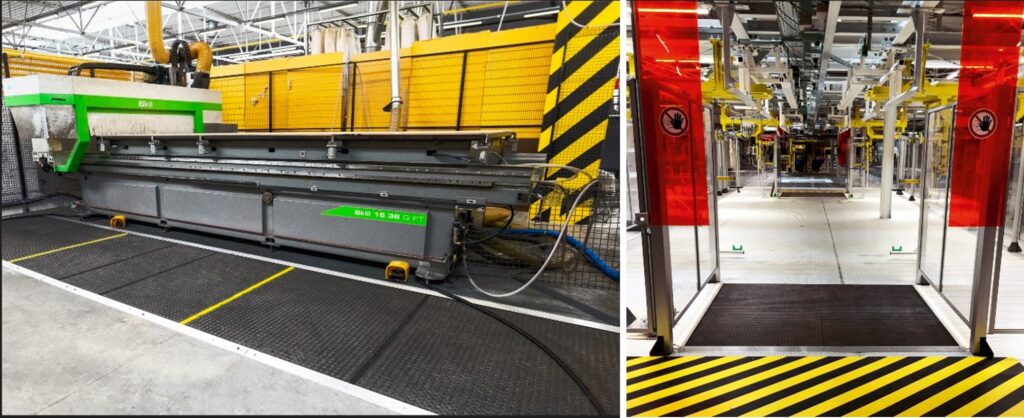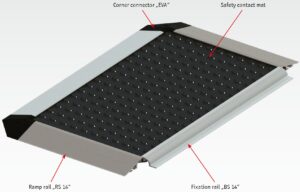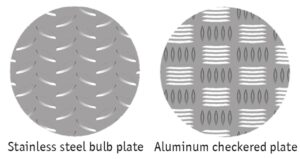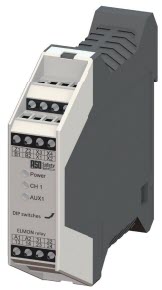
Manufacturing plants often have areas surrounding machinery and robots that pose a hazard or threat to personnel or equipment if entered while a machine or robot is running.

Pressure-sensitive SENTIR safety mats from ASO Safety Solutions are used for area and perimeter guarding, surrounding potentially hazardous plant equipment or creating a “safe zone” to signal the equipment to stop before a person fully enters a hazardous area.
Presence-sensing mats operate on the principle of a basic normally-open switch. When a specified minimum weight is applied to the mat, the inner flexible contact elements touch and “close” the circuit. Typically, these mats are wired to the emergency motor controls or a safety relay that signals the equipment to stop when someone is detected entering a restricted area.
A single compound polyurethane material assures impermeability against oils, water, and dirt. An anti-slip surface is implemented into the design and optional checkered surfaces in aluminum or high-grade stainless-steel can be used in areas where high mechanical demand is placed on the upper SENTIR mat surface.


1) Safety Mats Delineate Dangerous Areas and Will Stop the Machine’s or Robot’s Motion When Crossed
Safety mats surround potentially hazardous plant equipment and robots to create a monitored “safe zone”, signaling the equipment to stop before a person fully enters a hazardous area. It’s not just that we want to put a mat “somewhere” around a hazard. We must control the path available into the hazardous area and take into consideration the time it takes between when a person “trips” the safety mat and when the hazard fully stops its motion.
As noted in the Safety Distance Calculation for Safety Mats section below, the amount of time it takes the hazard to cease motion and the walking speed of a human are used to calculate the size of the safety mat required. The hazard must stop moving by the time the operator gets there, so the safety mat size and location are critical to operator safety.
2) Safety Mats Don’t Interfere with Sightlines
Perimeter guards are used to create a barrier to entrance into a hazardous area. Often, “hard guards”, such as industrial fencing, are used for this purpose. In some situations, these types of large fence-type guards may not be desirable, as they can obstruct sightlines when forklifts are used in the area.
3) Safety Mats Can Monitor Whether an Operator is Present
In addition to detecting when an operator is somewhere they should not be or enters a hazardous area, a safety mat can also be used to ensure that an
operator is present where they need to be. An example is a continuous process that requires an operator to constantly monitor production quality of a large web. If the operator is not at the specified station, the process can fail because the situation was not monitored. In this case, the mat can detect whether someone is present by looking for a closed circuit from the safety mat or relay.
4) Safety Mats are Basically ON-OFF Switches and Can be Used in Non-Safety-Related Applications
ASO mats can be fabricated into an array of almost any shape and size. In commercial applications, the switching function that takes place when someone stands or walks on the mat may be used in entertainment, guidance, amusements, security, lighting or other applications where verified presence and ON-OFF control in precise locations are needed.
ELMON relay safety relays serve to monitor tactile sensors such as SENTIR safety mats, edges, and bumpers. All control units comply with EN 13849-1 and the new Machinery Directive 2006/42/EC.
This switching device has been designed and type-approved in accordance with EN ISO 13849-1 “Safety-related parts of control systems” for category 3 Performance Level e. For compliance with category 3, the safety output is set up redundantly with two independent switching elements.
In addition the device has been type-approved according to EN 62061 “Functional Safety of Safety-Related Electrical, Electronic, and Programmable Electronic Control Systems“, and can meet a safety function up to SIL 3.
The monitoring state of the sensor and the applied operating voltage are indicated by LED. If there is a fault alarm, all safety outputs are inactive.

The first and by far the most important consideration is the calculation of the safety distance. There is a minimum mat size that should be placed between a worker and a hazardous motion. Many users will ‘‘eyeball’‘ the application, look at the area where a machine operator would stand and say, ‘‘that looks like it needs a 24-inch wide mat.’‘ It may not be enough.
In standard B11.19, the American National Standards Institute (ANSI) states that ‘‘The safety mat device shall be located such that the operator cannot reach the recognized hazard before hazardous motion of the machine has ceased.’‘
Unfortunately, the ANSI standard stops there. To figure out how much mat you need between a machine and a worker, it’s necessary to refer to the standard EN 999. This standard provides a formula for determining the correct mat size for a specific hazard. The formula is similar in nature to another calculation, which some readers may be familiar – the mounting distance formula for a safety light curtain.
The mat formula reads as follows: S = (63 in./sec. x T) + (47.2 in. – 0.4H)
where: S = The minimum distance from the danger zone to the detection zone in inches. This calculation assumes that the approach of a person toward a dangerous area is at walking speeds. T = t1 + t2 T = The overall system stopping time. t1 = The maximum time between the actuation of the safety mat and
the controller output relays being in the de-energized state. t2 = The response time of the machine being guarded. The time required to stop the machine or remove the risk after receiving the output signal from the mat system. H = The distance above the reference plane (floor) in inches. When mats are mounted on the floor, H = 0.
Example: As an example, let’s say the stopping time of the guarded machine is 0.300 seconds. The response time of the mat system is 0.025 seconds. The safety mat is to be mounted at the reference plane (floor).
S = (63 in./sec. x T) + (47.2 in. – 0.4H) or S = (63 in./sec. x (t1 + t2)) + (47.2 in. – 0.4H)
Therefore: S = (63 in./sec. x (0.300 sec. + 0.025 sec.)) + (47.2 in. – (0.4H x 0.0in.)) S = (63 in./sec. x 0.325 sec.) + (47.2 in. – 0.0 in.) S = 20.5 in. + 47.2 in. S = 67.7 in. or 1720 mm
This calculation specifies that the distance starting at the mat edge furthest from the hazardous location should be at least 67.7 inches. This also implies that the floor area, from a distance of 67.7 inches to the hazardous location must be guarded by mats or other means, such as fencing, to prevent any undetected access to the hazardous location. Using this formula will usually result in a larger safety mat specification than most people would estimate.
Minimum Detection Zone
The distance a person walks is generally a factor of the walking speed and the stride length. As we have already seen, the positioning of safety equipment, determined by these calculations, assumes a person is walking. The stride length affects the minimum
size of the mat detection zone. The EN 999 standard has determined that this dimension is equal to 750 mm or 29.5 inches. Thus, the minimum size of a safety mat, measured toward the direction of movement should be at least 29.5 inches.
For additional information, to start designing a safety mat solution, or to discuss your safety mat requirements, please contact R.J. Wilson, Inc. at 781-335-5500 or [email protected].